There is a growing movement to support older adults’ efforts to age in place. Designing accessible homes is a key component of a successful plan. Learn how to foster independence and self-sufficiency with accessible home design features.
Why Aging-in-Place Design Matters
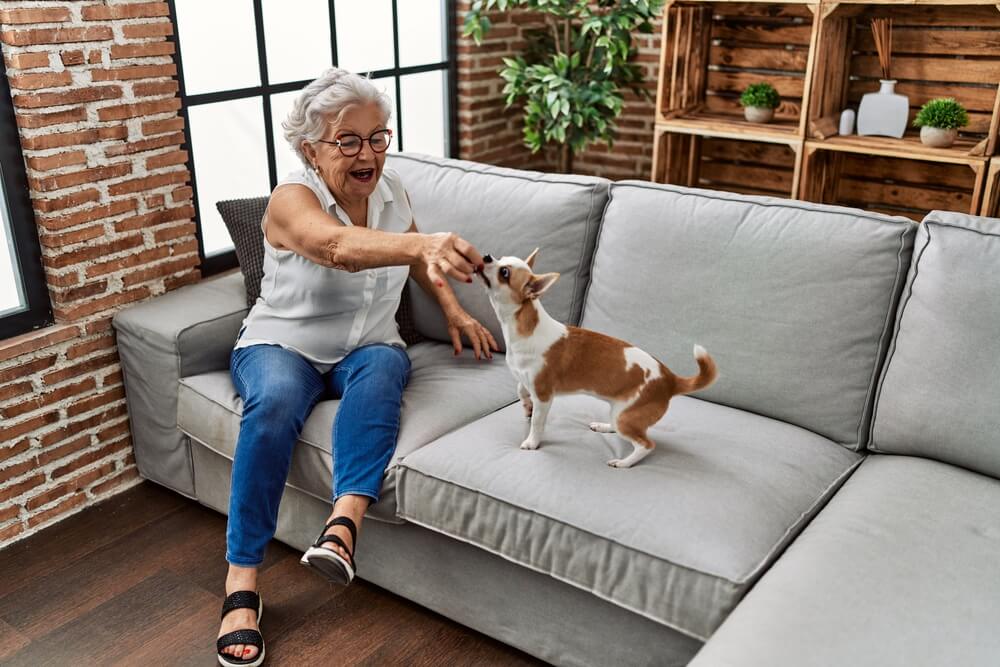
Incorporating universal design standards allows residents to remain in their homes for longer. This keeps them engaged as active and contributing members of their communities. It also ensures that friends, family, and neighborhood-level resources are available.
The AARP Home and Community Preferences survey reports that more than three-quarters of adults want to remain in their homes as they age. Evidence supports older adults remaining in their homes. They live healthier lives with fewer falls, and greater life satisfaction.
The National Institute on Aging recommends planning well in advance for a successful experience. This planning includes having community resources in place. It also means making home improvements and modifications that support older adults who wish to remain at home throughout their lives.
Improving Independence and Emotional Well-being
Accessible design supports autonomy, enabling older adults to live with dignity and confidence, a quality that is not always possible in standard environments. When caregivers are necessary, they can be familiar faces, whether family members or professionals.
Aging in place also offers immense psychological benefits. The predictability and continuity it provides are important for many older adults. Familiar surroundings minimize stress and keep seniors connected to their social support systems.
Addressing Physical Challenges
Intentional accessible home design allows a home to evolve with its inhabitants instead of acting as a barrier to independence. Age-related changes in cognition, vision, and mobility can affect how people interact with their homes.
Many older adults develop joint pain, sometimes accompanied by decreased strength and balance. Conditions such as Parkinson’s disease can make these more pronounced. These factors increase the risk of a fall. Poor design practices, such as low lighting, clutter, and uneven surfaces, exacerbate the problem. Intentional designs that address declining strength and balance help older adults manage fall risk in their homes.
Cognitive decline can impair memory and spatial awareness, making cluttered or dim spaces more stressful and more hazardous.
Vision changes are not all associated with declining eyesight. Light and glare sensitivity are also issues, as is the inability to adapt to low-light conditions. Age-related eye conditions, including glaucoma, cataracts, and macular degeneration, can also interfere with depth perception. People with these conditions may have difficulty navigating homes with closed spaces, poor storage solutions, and complex patterns.
Preventing Caregiver Stress and Burnout
A key benefit of the independence older adults gain through intentional, accessible home design is less strain on family caregivers. The more you can preserve independence through creating an accessible home, the less your loved one will need to rely on others to safely navigate the space.
Taking care of an aging parent is incredibly stressful. It is time-consuming and physically demanding, and something not everyone is ready to take on. According to the Family Caregiver Alliance, between 40% and 70% of family caregivers show signs of depression. The Centers for Disease Control and Prevention notes that caregivers score lower on the majority of health indicators than their non-caregiving peers.
Core Principles of Inclusive and Accessible Home Design
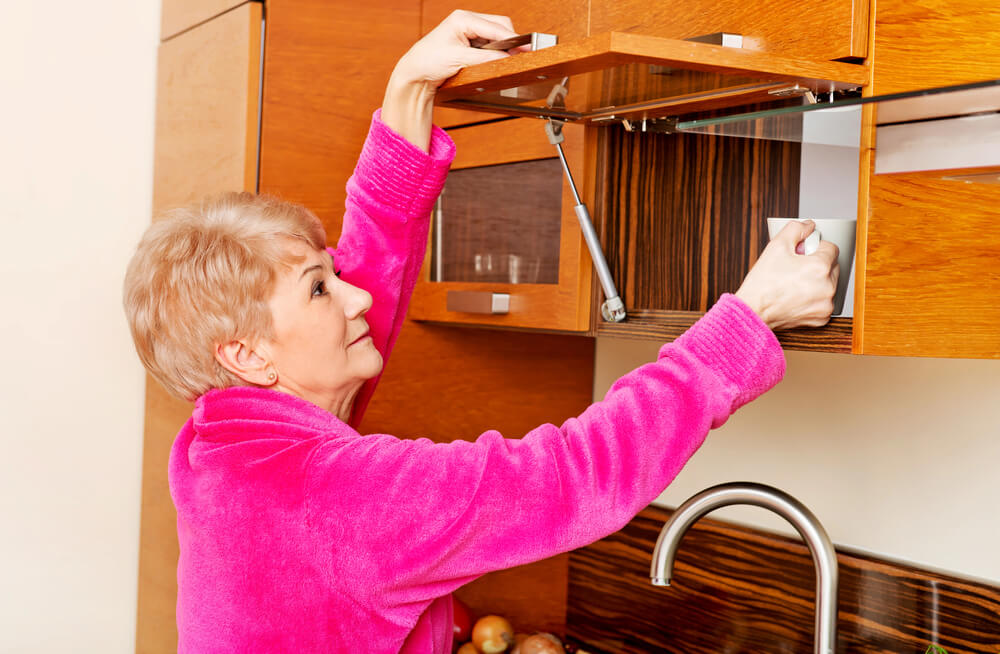
Intentional designs that foster independence include single-level floor plans, integrated smart home features, and accessible storage. Something as simple as extra lighting can drastically improve access and confidence for an older adult. Lower counter heights and accessible bathrooms allow them to perform activities of daily living without assistance.
Accessible home design prioritizes function, safety, and inclusivity, not just looks. This isn’t just for older adults; homeowners of all ages can benefit from inclusive design elements.
Universal Design
Universal design is at the core of accessible home design. These homes incorporate products and floor plans that are designed for everyone to use with minimal adaptations, regardless of ability. Examples of universal design include:
-
Lever-style door handles
-
No-step entrances and interior transitions
-
Open floor plans
-
Rocker light switches
-
Wide doorways
These features not only improve safety but are also adaptable and easy to use.
Barrier-Free Access
Universally designed features promote barrier-free access for everyone. For example, a 36-inch doorway is as accessible for someone with a walker as it is for a parent carrying a small child or someone unloading groceries.
Clear Pathways
Ample storage is another key feature. This reduces clutter, keeping spaces open and free from trip hazards. Coupled with open floor plans and decor that reduces clutter, it facilitates navigation throughout a home. It also creates an attractive and inviting space
Non-Slip Surfaces
Non-slip surfaces are crucial to limiting fall hazards. Textured vinyl is an excellent choice. Matte tiles and stained concrete provide a more upscale look with similar benefits. Low-pile carpeting works for bedrooms where you want something softer underfoot. Avoid area rugs that can cause tripping.
Design Thinking Considers Various Challenges
It is important to include modifications for individuals with visual, auditory, and sensory differences. Ensuring a high contrast between walls and floors is both visually attractive and especially helpful for people who struggle with spatial awareness. Visual alarms that alert you to visitors, smoke, or gas leaks with flashing lights are invaluable for people with hearing difficulties.
Carefully placed lighting, including at floor-level, helps navigation throughout the home. Easy-to-read displays and voice-activated controls on smart devices allow those with visual impairments to operate home appliances and systems.
Essential Home Modifications for Seniors and Those with Disabilities
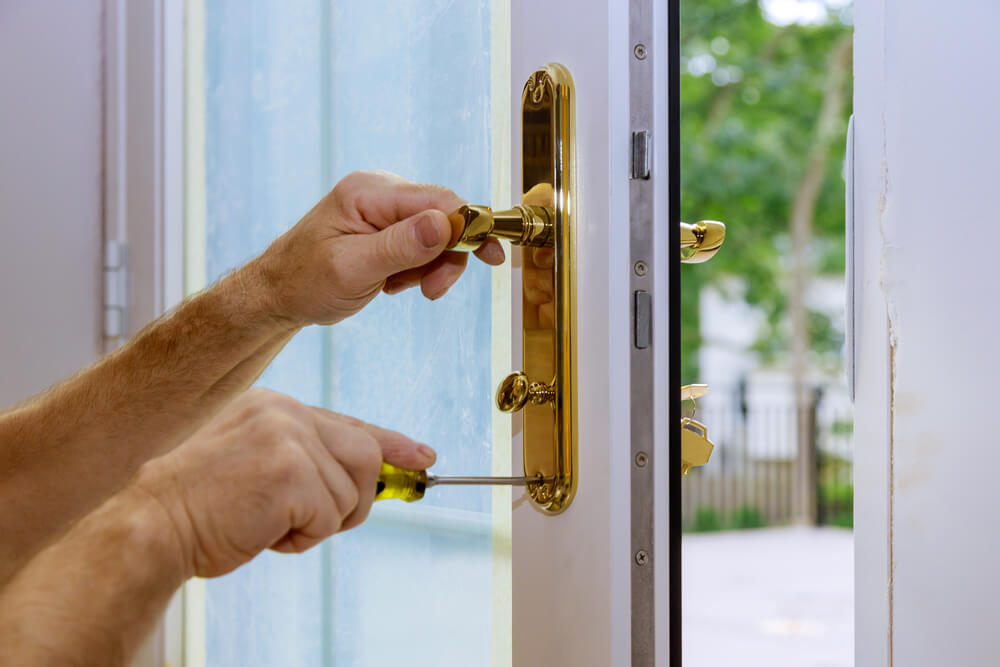
With accessible home design, modifications can range from small touches to major renovations. When implemented carefully, both can make life significantly easier for older adults and family members with diverse abilities. Focusing on these essential points in each room helps you make the biggest impact.
Entryways and Doorways
The entry to your home is a place where accidents can easily happen. Stairs, landings, and clutter all contribute to trip hazards. People who use mobility aids may struggle to navigate doorways that are too narrow. The following modifications help make getting in and out of your home easier:
-
Adding lighting with motion sensors
-
Installing ramps, flat thresholds, or smooth transitions between flooring
-
Using lever handles instead of round doorknobs
-
Widening doorways to at least 36 inches
It also helps to have a dedicated place for keys, shoes, and coats near the entry. This reduces clutter and helps limit fall hazards in the area.
Bathrooms
The bathroom is one of the highest risk areas for falls among older adults at home. Hard surfaces and water increase the possibility of serious injury. Adding safety features can help preserve dignity by allowing older adults to manage toileting, grooming, and bathing independently.
Minor modifications that improve accessibility in the bathroom include:
-
Elevated toilet seats
-
Grab bars
-
Non-slip flooring
-
Shower chairs
A roll-in shower or walk-in tub offers safer bathing for those with mobility or balance challenges, if your budget permits.
Kitchens
The kitchen is the heart of a home, but it can be difficult to navigate for someone with physical limitations. The following modifications improve accessibility in food prep, storage, and eating areas:
-
Apron-front or shallow kitchen sinks
-
Clear space under cabinets for walker or wheelchair accessible home designs
-
Easy-open cabinets with accessible handles
-
Lower wheelchair-height counters
-
Pot fillers and pull-down faucets
Supportive mats are a popular choice in work areas, but they can pose a trip hazard. If you choose to have rugs in the kitchen, ensure they are firmly anchored and offer a low-profile transition from the floor.
Living Areas
Living areas are sometimes overlooked, but small changes here can have a significant impact on safety and access.
Sturdy furniture that won’t tip if someone uses it for assistance and stability is crucial. When shopping, choose high-quality brands that feature premium construction and materials.
Leave plenty of room between furniture pieces for easy navigation with a mobility aid. Be aware of cords and place plug-in devices where the cords are out of the way of walkways. Removing clutter with accessible storage, such as baskets or console tables, goes a long way to reducing falls.
Use several different types of lighting to improve visibility in living areas. Wall sconces, overhead lights, and task lamps can help people with low vision see the environment without producing glare.
Bedrooms
The bedroom is another high-risk area for falls. Poor lighting and the tendency for the room to collect clutter contribute to the problem. Fortunately, these issues are easily addressed with simple changes.
Adjustable-height beds make getting in and out easier for people with limited mobility. They facilitate easing into a seated position with your feet on the floor before standing, which can help prevent dizziness.
It is also important to keep walking paths clear from clutter, loose rugs, and cords. Easy-access storage reduces clutter, which lowers the risk of tripping. Keeping furniture along the walls eliminates lamp and charging cords stretching across the floor. Soft lighting and motion sensor night lights further improve safety.
If you choose a system with a dedicated location, the bedroom is also an excellent place for an emergency call device. Ensure that seniors bring their mobile or wearable units into the bedroom when they go to sleep.
The Role of Smart Home Technology in Caregiving
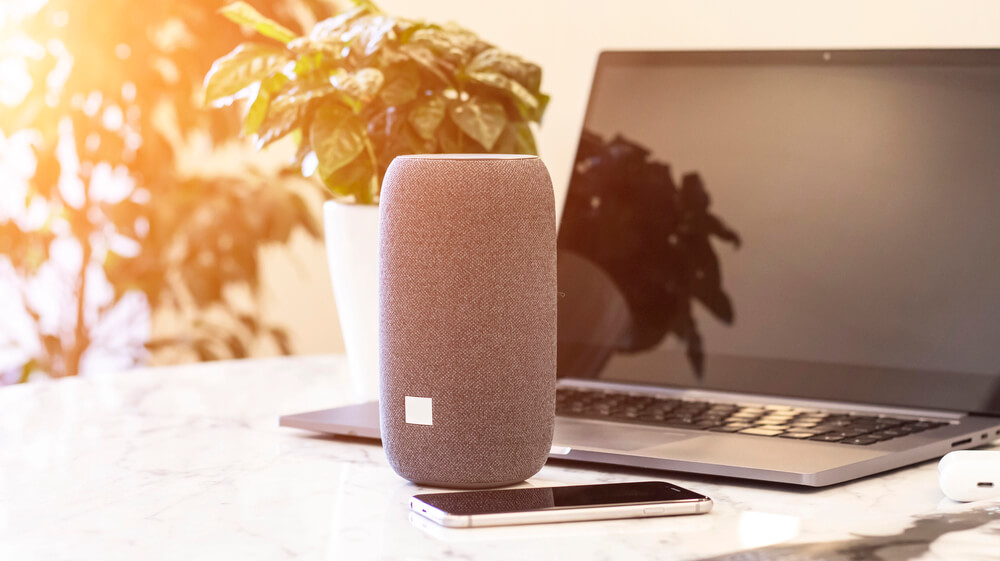
Accessible home design should include smart home devices, that can ease caregiver stress by enhancing safety, connectivity, and independence for people with physical limitations. Many also provide peace of mind to caregivers when they are unable to be physically present.
-
Voice-activated assistants allow hands-free interaction with technology. This is incredibly helpful for people with limited mobility, vision, or dexterity. You can use them to set medication and appointment reminders or control home features such as lights or the thermostat. Voice-activated calling also allows your loved one to dial an emergency contact when they are unable to reach a phone.
-
Fall detection systems are increasingly integrated into consumer electronics. Sensors in phones and smart watches detect falls and automatically alert caregivers or emergency response systems. Smart flooring systems that utilize sensors to detect unusual movement patterns and call for help are emerging on the market. These improve reliability because they do not depend on the person wearing or carrying a separate device.
-
Automated and motion-activated lighting can drastically reduce fall risk for people with low vision or mobility limitations. These can be fully integrated into the home’s wiring or as simple as plug-in sensors and smart bulbs.
-
Smart home devices also provide remote monitoring access and alerts for caregivers. Trackers are available for daily activity, such as how often the refrigerator is opened, temperature, and smoke or carbon monoxide alerts. You can also use geo-fencing to receive an alert when someone with a memory impairment goes beyond a specified boundary.
When integrated into centralized platforms, these tools provide powerful support for ensuring that your loved one is safe and cared for.
Products that Support Accessibility
The range of products that support accessibility is inspiring. From widely recognized items like shower chairs to emerging technologies, these products can help older adults age in place:
-
Elevated toilet seats
-
Grips and jar openers
-
Reachers
-
Roll-in showers
-
Stair lifts
Some products, such as a new roll-in shower, require major remodeling projects. Others are easy to install or require no installation at all. For example, a reacher provides access to items on high shelves without the need for a ladder.
Modifying Homes for Long-term Use
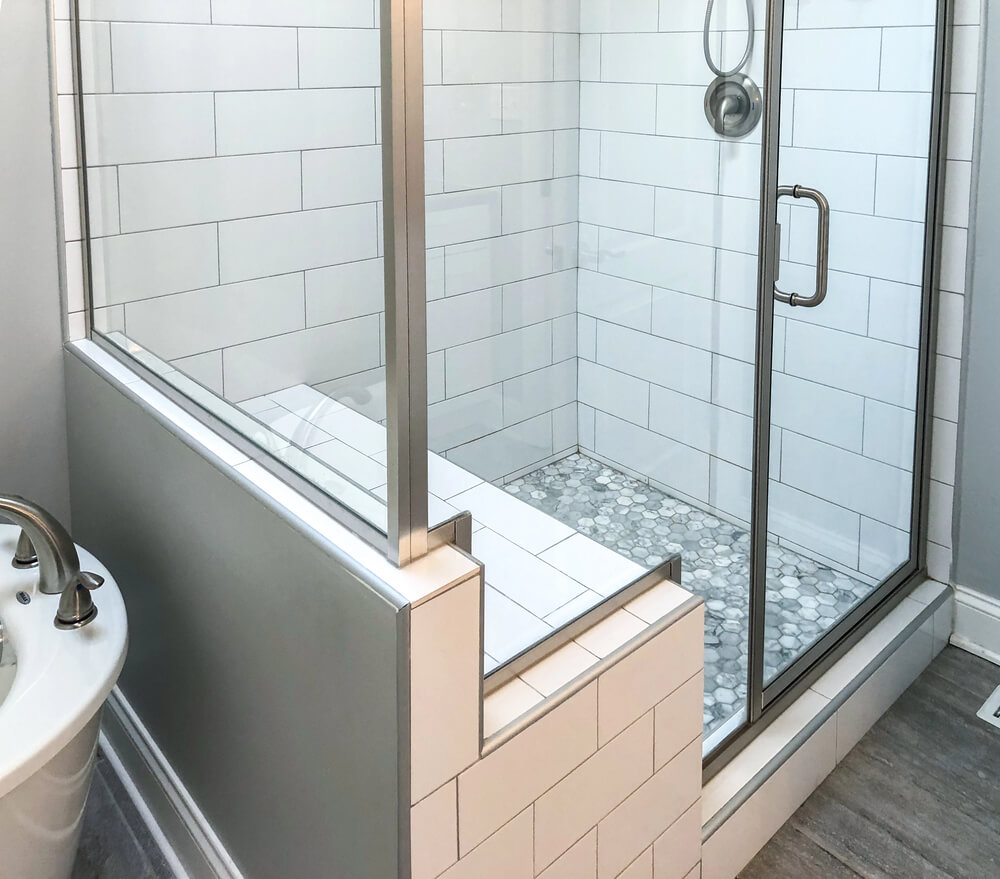
Prioritizing barrier-free access, intuitive features, and universal design creates a home that everyone can enjoy now and well into the future. General recommendations are to accommodate decreased mobility and add features to lower fall risk. These can benefit almost any older adult who wants to live independently at home.
Thoughtful accessible home design and planning enable you to address future needs and incorporate them into home modifications. If you or a loved one has a degenerative condition, discuss the most helpful accommodations with a healthcare provider familiar with your medical situation. For example, someone with early dementia could benefit from an open floor plan and integrated safety features.
You can incorporate accessible and inclusive home design into new construction and renovation projects. Adding an accessory dwelling unit is one approach that more families are taking. It encourages independence, gives everyone their own dedicated personal space, and fosters healthy intergenerational living.
Budgeting and Planning for Home Modifications
Aging in place remodeling is generally considered more affordable than long-term senior living. Small modifications and improvements tend to be inexpensive and require minimal planning. However, larger modifications related to accessible home design can strain your budget if you are unprepared. Careful planning helps ensure you can afford to age in place.
Changes Based on Safety
One effective strategy is to prioritize projects based on necessity. Will it make life safer for someone in the house? Then it moves to the top of your home modification list. Some examples of safety-related changes include grab bars, motion-activated lighting, and smooth-entry showers. Ramps and larger doors may be required for people who rely on wheeled mobility aids.
Modifications Suggested By Professionals
A home assessment can help pinpoint changes that will be most helpful for your home. A small study published in JMIR Aging showed that some seniors were able to successfully complete self-evaluations of their homes using a digital tool.
In addition, occupational therapists and contractors specialize in understanding aging-in-place home modifications and are excellent resources for this.
Thinking ahead limits the need for additional modifications or renovations down the road. Using universal design principles empowers every family member to care for themselves to the greatest extent possible. Accessible home design is an investment in lasting dignity and independence.
Resources for Caregivers and Families

Numerous resources are available for individuals who wish to plan for aging in place. Reach out to local government offices, accessibility focused non-profits, and specialty home designers to learn more about devising an appropriate plan.
Government Resources
For many people, planning for aging in place begins with utilizing some of these available government resources.
The Administration for Community Living: A government organization that promotes autonomy over living choices for older adults and individuals with disabilities at any age. They can connect you to a wealth of resources for independent living, including advocates and service providers.
The Eldercare Locator: This is a service of the ACL. It allows you to search for service providers in your area online or call to speak with a representative. Eldercare Locator offers resources for caregivers and their families on topics such as housing, transportation, and maintaining health.
Medicare.gov is a valuable resource for people seeking to learn more about which durable medical equipment the program covers. Depending on your plan, you may be able to receive assistance with purchasing commode chairs, walkers, and other assistive devices to make your home more accessible.
The National Institute on Aging: This agency offers a treasure trove of resources to help make your home more accessible. Their website offers tips and advice, links to other support services, and a Home Safety Checklist you can use to identify potential accessibility barriers.
Non-profit Resources
National and local nonprofit organizations offer a range of support and services for people looking to age in place. These major organizations are a great place to start, and you may also find additional organizations specific to your area.
The Family Caregiver Alliance: This alliance supports family caregivers through a range of programs and services. Their caregiver resources provide tools to help you take care of yourself, your loved ones, and your community.
Rebuilding Together: This national nonprofit helps revitalize communities with healthy and accessible housing. Through its Safe at Home program, Rebuilding Together helps improve home accessibility for older adults and people with disabilities so they can live independently.
USAging: An organization that supports Area Agencies on Aging and their programs that empower older adults and individuals with disabilities. They provide advocacy and capacity-building support for community- and state-level groups.
Home Design and Accessibility Resources
Working with an experienced home designer is an excellent way to ensure you consider everyone’s current and future needs when building or renovating a home.
The East Metro Seniors Agenda for Independent Living: This group has produced a valuable resource on incorporating universal design principles into home purchase or home construction projects. In addition to excellent advice and tips, it also provides readers with a list of additional resources.
HomeMods.org: A resource of the Fall Prevention Center of Excellence at the USC Leonard Davis School of Gerontology, it offers training and resources to ensure that home modifications promote accessibility and help reduce fall risks.
World CopperSmith: A product manufacturer that offers a range of attractive appliances and fixtures that make life easier, they can customize sinks and furniture to ensure they are appropriate for everyone in your household.
The Good Fit Poor Fit podcast: This podcast is produced by the Universal Design Project. It covers topics relating to universally accessible home design in new home construction and renovations.
